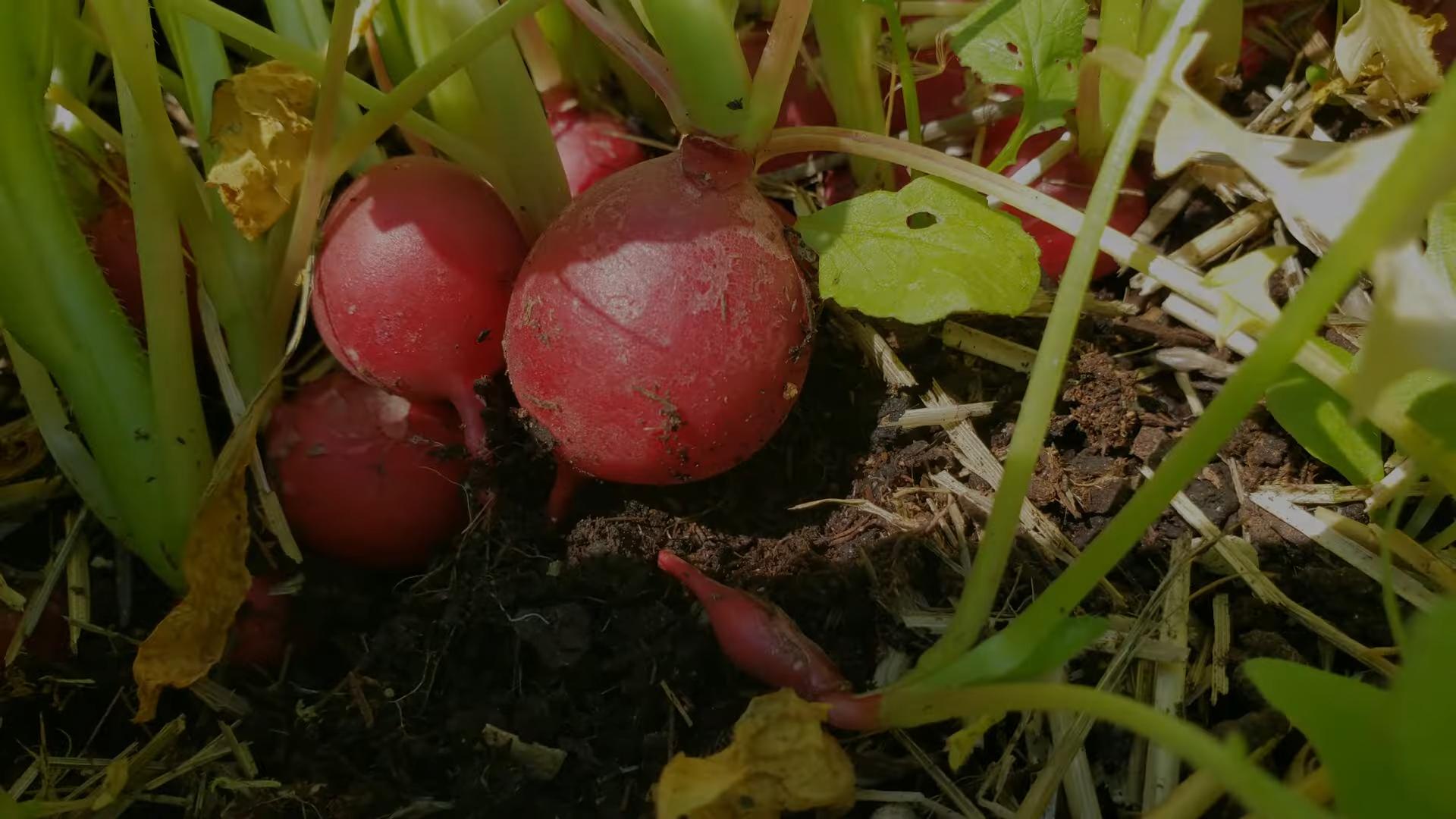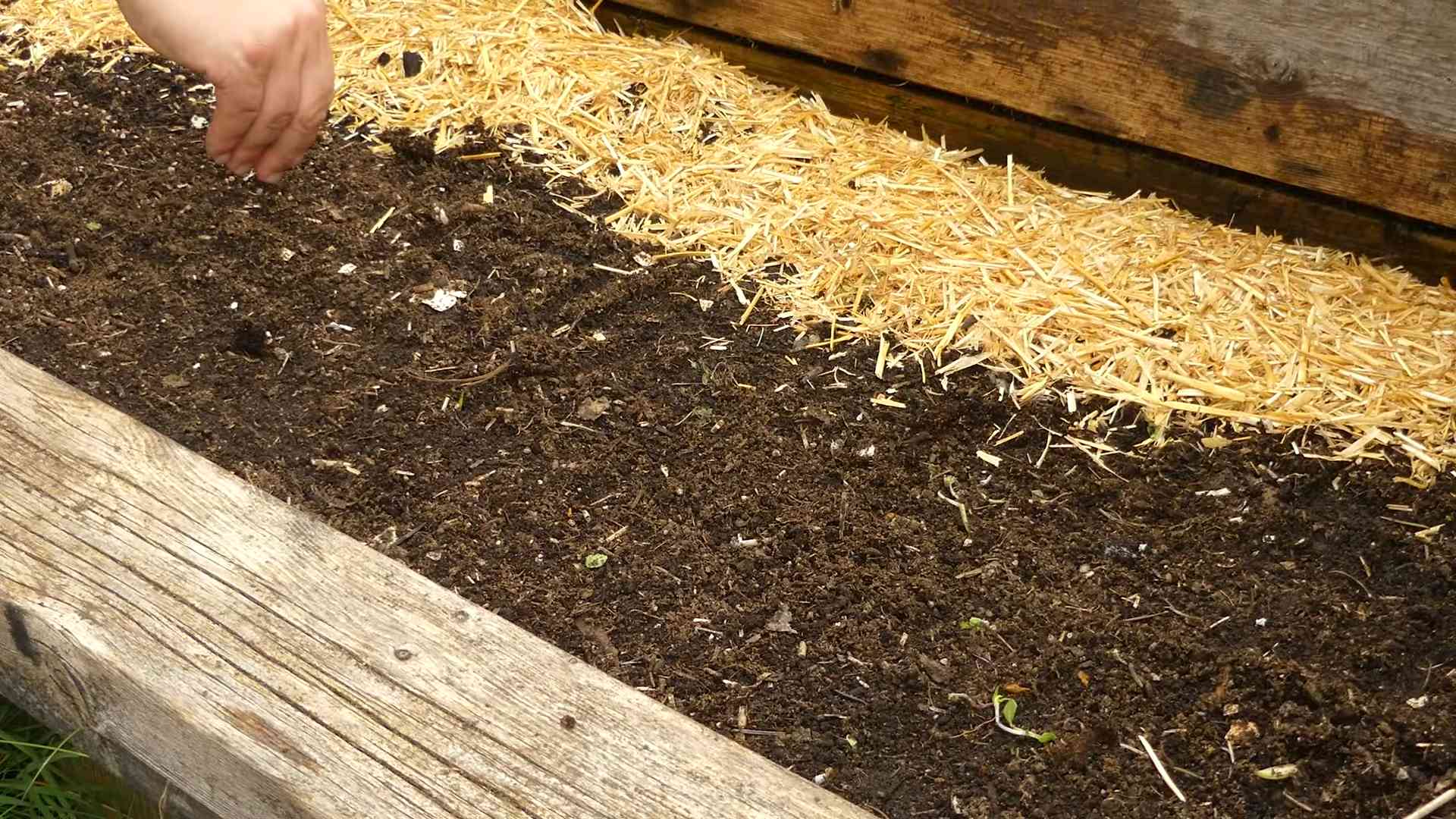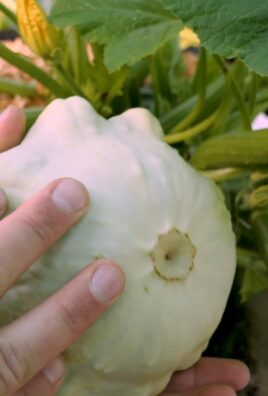Grow Radishes Quickly? Absolutely! Imagine plucking crisp, peppery radishes from your own garden just weeks after planting. It’s not a gardener’s myth; it’s an achievable reality, even if you’re a complete beginner. For centuries, radishes have been a staple in gardens worldwide, prized for their rapid growth and vibrant flavor. From ancient Egypt, where they were a common food, to modern-day salads, radishes have a rich history of providing a quick and nutritious boost to our diets.
But let’s be honest, who has time to wait months for a harvest? We all crave instant gratification, especially when it comes to fresh, homegrown produce. That’s where these DIY tricks come in! I’m going to share some simple yet effective hacks that will help you grow radishes quickly and efficiently, maximizing your yield and minimizing your waiting time. Whether you’re short on space, time, or patience, these tips will transform your gardening experience and have you enjoying delicious, crunchy radishes in no time. Get ready to unleash your inner green thumb and discover the secrets to a speedy radish harvest!

Grow Radishes Quickly: My Foolproof DIY Guide
Hey there, fellow gardening enthusiasts! I’m so excited to share my tried-and-true method for growing radishes faster than you ever thought possible. Forget waiting weeks – with this DIY hack, you’ll be munching on crisp, peppery radishes in a fraction of the time. Let’s get started!
Understanding the Radish’s Need for Speed
Radishes are naturally quick growers, but we can give them a little boost with the right techniques. The key is to provide them with optimal conditions from the get-go. This means focusing on:
* Soil Preparation: Loose, well-draining soil is crucial. Radishes are root vegetables, so they need space to expand without resistance.
* Sunlight: Radishes love sunshine! Aim for at least 6 hours of direct sunlight per day.
* Watering: Consistent moisture is essential, but avoid overwatering, which can lead to rot.
* Thinning: Giving your radishes enough space to grow is vital. Crowding leads to stunted growth and smaller radishes.
* Fertilizing: A little boost of nutrients can work wonders, but don’t overdo it!
Materials You’ll Need
Before we dive into the steps, let’s gather our supplies. You probably have most of these already!
* Radish seeds (choose a fast-maturing variety like Cherry Belle or French Breakfast)
* Gardening gloves
* Trowel or hand cultivator
* Watering can or hose with a gentle spray nozzle
* Compost or well-rotted manure
* Optional: Seed starting tray and potting mix (for starting indoors)
* Optional: Row cover or netting (to protect from pests)
* Optional: Liquid fertilizer (balanced formula)
Step-by-Step Instructions: From Seed to Salad in Weeks!
Alright, let’s get our hands dirty! Here’s my step-by-step guide to growing radishes quickly:
1. Preparing the Soil: The Foundation for Success
This is arguably the most important step. Radishes need loose, fertile soil to thrive.
1. Choose your location: Select a spot in your garden that receives at least 6 hours of direct sunlight per day.
2. Clear the area: Remove any rocks, weeds, or debris from the planting area.
3. Loosen the soil: Use a trowel or hand cultivator to loosen the soil to a depth of at least 6 inches. This will make it easier for the radish roots to grow.
4. Amend the soil: Incorporate a generous amount of compost or well-rotted manure into the soil. This will improve drainage, add nutrients, and create a loose, fertile growing medium. I usually aim for a 2-3 inch layer of compost worked into the top 6 inches of soil.
5. Rake the surface: Rake the soil smooth to create a level planting surface.
2. Sowing the Seeds: Planting for a Speedy Harvest
Now for the fun part – planting those tiny seeds that will soon become delicious radishes!
1. Create shallow furrows: Use your finger or a trowel to create shallow furrows in the soil, about ½ inch deep and 1 inch apart.
2. Sow the seeds: Sprinkle the radish seeds evenly along the furrows, spacing them about ½ inch apart. Don’t overcrowd them!
3. Cover the seeds: Gently cover the seeds with a thin layer of soil.
4. Water gently: Water the area thoroughly with a watering can or hose with a gentle spray nozzle. Be careful not to wash away the seeds.
3. Watering and Maintenance: Keeping Your Radishes Happy
Consistent watering is crucial for rapid radish growth.
1. Water regularly: Keep the soil consistently moist, but not waterlogged. Water whenever the top inch of soil feels dry to the touch. I usually water every other day, but this will depend on the weather and soil conditions.
2. Thin the seedlings: Once the seedlings emerge (usually within 3-7 days), thin them to about 1-2 inches apart. This will give the radishes enough space to grow to their full size. Don’t be afraid to pull out the weaker seedlings – it’s better to have fewer, larger radishes than a crowded patch of small ones.
3. Weed regularly: Keep the area free of weeds, which can compete with the radishes for nutrients and water. Hand-pull weeds carefully to avoid disturbing the radish roots.
4. Optional: Fertilize lightly: If your soil is poor, you can give your radishes a light feeding with a balanced liquid fertilizer about 2 weeks after planting. Follow the instructions on the fertilizer package. Be careful not to over-fertilize, as this can lead to excessive foliage growth at the expense of root development.
4. Protecting Your Crop: Keeping Pests at Bay
Radishes are generally pest-resistant, but there are a few critters that might try to nibble on them.
1. Monitor for pests: Keep an eye out for common radish pests like flea beetles and root maggots.
2. Use row covers: To protect your radishes from flea beetles, you can cover them with a row cover or netting. This will prevent the beetles from reaching the plants.
3. Control root maggots: If you suspect root maggots, you can try sprinkling diatomaceous earth around the base of the plants. This natural powder will help to deter the maggots.
4. Practice crop rotation: To prevent pest and disease problems, avoid planting radishes in the same spot year after year.
5. Harvesting Your Radishes: The Moment of Truth!
The best part! Radishes are typically ready to harvest in 3-4 weeks, depending on the variety and growing conditions.
1. Check for maturity: Radishes are ready to harvest when the roots are about 1 inch in diameter. You can gently brush away the soil around the base of the plant to check the size of the radish.
2. Harvest carefully: Gently pull the radishes from the soil, being careful not to break the roots.
3. Wash and enjoy: Wash the radishes thoroughly and enjoy them fresh in salads, sandwiches, or as a crunchy snack.
Bonus Tips for Super-Fast Radish Growth
Want to take your radish-growing game to the next level? Here are a few extra tips:
* Succession planting: Sow a new batch of radish seeds every week or two for a continuous harvest throughout the growing season.
* Start indoors: For an even earlier start, you can start radish seeds indoors in seed starting trays about 2-3 weeks before the last expected frost. Transplant the seedlings outdoors once the weather warms up.
* Choose the right variety: Some radish varieties are faster-maturing than others. Look for varieties like Cherry Belle, French Breakfast, or Sparkler.
* Keep the soil cool: Radishes prefer cool soil temperatures. In hot weather, you can mulch around the plants to help keep the soil cool and moist.
* Don’t let them get too big: Radishes can become woody and bitter if they are left in the ground for too long. Harvest them as soon as they are ready.
Troubleshooting Common Radish Problems
Even with the best care, you might encounter a few problems along the way. Here’s how to troubleshoot some common radish issues:
* Radishes are small and stunted: This is usually caused by overcrowding, poor soil, or lack of water. Thin the seedlings, amend the soil with compost, and water regularly.
* Radishes are cracked: This is often caused by inconsistent watering. Keep the soil consistently moist, but not waterlogged.
* Radishes are bitter: This can be caused by hot weather or letting the radishes get too big. Harvest them as soon as they are ready and try to keep the soil cool.
* Radishes have holes in the leaves: This is likely caused by flea beetles. Cover the plants with a row cover or netting.
Enjoy Your Speedy Radish Harvest!
There you have it – my foolproof guide to growing radishes quickly! With a little bit of planning and effort, you can enjoy a bountiful harvest of crisp, peppery radishes in just a few weeks. Happy gardening!

Conclusion
So, there you have it! Growing radishes quickly doesn’t have to be a gardening enigma. By implementing these simple yet effective strategies, you can transform your garden into a radish-producing powerhouse, enjoying crisp, peppery delights in a fraction of the usual time. This isn’t just about speed; it’s about maximizing your gardening efforts and reaping the rewards of fresh, homegrown produce sooner rather than later.
Why is this DIY trick a must-try? Because it empowers you to take control of your radish harvest. No more waiting impatiently for weeks on end, only to be disappointed by slow growth or poor yields. With the techniques outlined, you’ll be actively influencing the growing conditions, ensuring your radishes receive the optimal amount of sunlight, water, and nutrients they need to thrive. Plus, the satisfaction of harvesting your own radishes, knowing you played a direct role in their rapid growth, is simply unparalleled.
But don’t stop there! Experiment with different radish varieties to discover your favorites. Try interplanting your radishes with other fast-growing greens like spinach or lettuce to maximize space and create a vibrant, diverse garden bed. Consider succession planting, sowing new radish seeds every week or two, to ensure a continuous harvest throughout the growing season. You can also explore different soil amendments to further enhance growth. Adding compost or well-rotted manure to your soil can provide an extra boost of nutrients, leading to even faster and more robust radish development.
We’ve focused on techniques that accelerate growth, but remember that flavor is key. Don’t be afraid to harvest your radishes at different stages of maturity to find the perfect balance of crispness and peppery bite. Some varieties are best enjoyed when small and tender, while others develop a more intense flavor as they mature.
Ultimately, the best way to learn is by doing. So, grab your seeds, prepare your soil, and put these tips into action. We are confident that you will be amazed at how quickly you can grow radishes using these methods.
We wholeheartedly encourage you to try this DIY trick for growing radishes quickly. It’s a game-changer for any gardener, whether you’re a seasoned pro or just starting out. And most importantly, we want to hear about your experience! Share your successes, your challenges, and any variations you discover along the way. Post photos of your bountiful radish harvests on social media, tag us, and let’s create a community of radish-growing enthusiasts. Your insights could inspire others to embark on their own radish-growing adventures. Happy gardening!
Frequently Asked Questions (FAQ)
What is the ideal soil pH for growing radishes quickly?
Radishes thrive in slightly acidic to neutral soil, with a pH range of 6.0 to 7.0. You can test your soil pH using a home testing kit or by sending a sample to your local agricultural extension office. If your soil is too acidic, you can amend it with lime. If it’s too alkaline, you can add sulfur or organic matter like peat moss. Maintaining the correct pH ensures optimal nutrient availability for your radishes, promoting faster and healthier growth.
How much sunlight do radishes need to grow quickly?
Radishes require at least 6 hours of direct sunlight per day to grow quickly and develop their characteristic flavor. While they can tolerate some shade, insufficient sunlight will result in slower growth, smaller radishes, and a less intense peppery taste. Choose a sunny location in your garden for planting, and consider using grow lights if you’re growing radishes indoors or in a shaded area.
What is the best watering schedule for radishes?
Consistent moisture is crucial for rapid radish growth. Water your radishes deeply and regularly, especially during dry periods. Aim to keep the soil consistently moist but not waterlogged. Overwatering can lead to root rot, while underwatering can cause the radishes to become tough and bitter. A good rule of thumb is to water when the top inch of soil feels dry to the touch. Mulching around your radish plants can help retain moisture and reduce the need for frequent watering.
How often should I fertilize my radishes?
Radishes are relatively light feeders and don’t require heavy fertilization. However, a light application of a balanced fertilizer can help promote faster growth. Apply a fertilizer with an NPK ratio of 10-10-10 or 5-10-10 at planting time, and then again about two weeks later. Avoid over-fertilizing, as this can lead to excessive foliage growth at the expense of root development. Organic fertilizers like compost tea or fish emulsion are also excellent options for providing a gentle and sustained release of nutrients.
What are some common pests and diseases that affect radishes, and how can I prevent them?
Radishes are generally resistant to pests and diseases, but they can be susceptible to certain problems, such as flea beetles, root maggots, and fungal diseases. Flea beetles can damage the foliage, while root maggots can burrow into the roots, causing them to become distorted and unmarketable. Fungal diseases can cause leaf spots or root rot. To prevent these problems, practice good garden hygiene, such as removing plant debris and weeds. You can also use row covers to protect your radishes from flea beetles and root maggots. If you encounter fungal diseases, treat them with a fungicide.
Can I grow radishes in containers?
Yes, radishes are well-suited for container gardening. Choose a container that is at least 6 inches deep and has drainage holes. Fill the container with a well-draining potting mix. Sow the radish seeds directly into the container, spacing them about 1 inch apart. Water regularly and fertilize as needed. Place the container in a sunny location. Container-grown radishes can be harvested in as little as three to four weeks.
What are some good companion plants for radishes?
Radishes are excellent companion plants for many other vegetables. They can help deter pests and improve soil health. Some good companion plants for radishes include carrots, lettuce, spinach, beans, and peas. Avoid planting radishes near hyssop, as it can inhibit their growth.
How do I know when my radishes are ready to harvest?
Radishes are typically ready to harvest in three to four weeks, depending on the variety and growing conditions. The best way to determine if they are ready is to check their size. Most radish varieties are ready to harvest when they are about 1 inch in diameter. You can also gently pull up a few radishes to check their size and maturity. If they are the desired size and have a firm, crisp texture, they are ready to harvest.
What can I do if my radishes are too spicy or bitter?
If your radishes are too spicy or bitter, it could be due to several factors, such as hot weather, insufficient watering, or overmaturity. To reduce the spiciness or bitterness, harvest your radishes when they are young and tender. Water them regularly, especially during hot weather. You can also try growing them in a slightly shaded location. Some radish varieties are naturally milder than others, so consider choosing a milder variety if you prefer a less intense flavor.
Can I eat the radish greens?
Yes, radish greens are edible and nutritious. They have a slightly peppery flavor similar to the roots. You can use them in salads, soups, or stir-fries. Choose young, tender greens for the best flavor and texture. Wash them thoroughly before using.




Leave a Comment